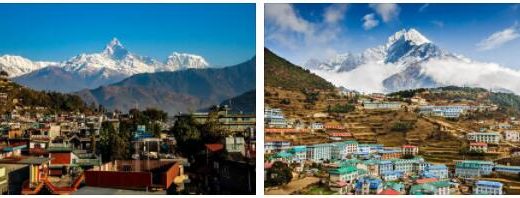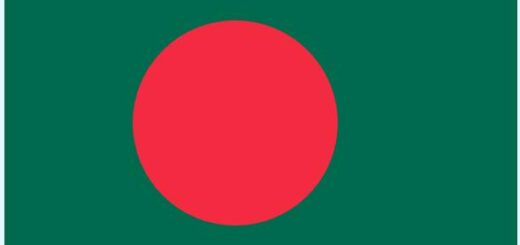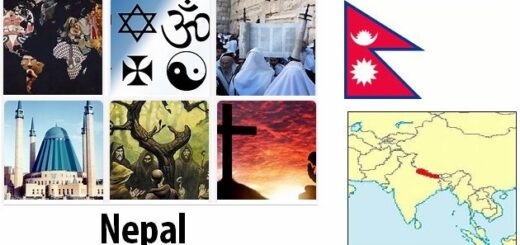State Structure and Political System of Nepal
Nepal is a multiethnic, multilingual, democratic, independent, indivisible, sovereign, Hindu constitutional monarchy. The 1990 Constitution is in force.
Administratively, it is divided into 5 development regions (Eastern, Central, Western, Mid-West and Far-West), which, in turn, are divided into 14 zones (anchol): Bagmati, Bheri, Dhavalagiri, Gandaki, Janakpur, Karnali, Kosi, Lumbini, Mahakali, Swords, Narayani, Rapti, Sagarmatha, Seti, and they are divided into 75 districts.
The largest cities (2001, thousand people): Kathmandu, Biratnagar (167), Lalitpur (163), Pokhara (156), Birgunj (112).
The form of government is a constitutional monarchy. The King is the Head of State and Commander-in-Chief of the Armed Forces. It can introduce a state of emergency in the country and take full power into its own hands (although the House of Representatives is vested with the right to cancel the state of emergency by 2/3 of the votes). Criticism of the actions of the king, queen and heir is not allowed. The king cannot be sued. It is officially proclaimed a symbol of the unity of the Nepalese nation. His income and property are not subject to any taxes.
The bicameral model of Parliament, the highest legislative body: the highest house (National Assembly) consists of 60 members, the lower house (House of Representatives) – of 205. 35 members of the upper house are elected by the lower house, 15 represent the regions, 10 are appointed by the king. Elections to the lower house are carried out on the basis of universal, equal and direct suffrage by secret ballot. The right to vote is granted to all citizens over the age of 18. The head of the upper house is the chairman, the lower house is the speaker, whose powers are very limited. Laws must be passed by both houses (with the exception of financial laws, which are considered only by the lower house). All legislative acts on finance, taxation, budget, army and police activities require the approval of the king. The term of office of members of the upper house is 6 years, the lower house – 5.
Executive power is divided between the king and the government (Council of Ministers), which is accountable to the House of Representatives. The leader of the party that won the most seats in the election is appointed prime minister (he must be a member of the lower house). In the absence of an absolute majority, a party leader is appointed who can secure the support of parliamentarians. The king, on the advice of the prime minister, appoints ministers, usually from among the deputies of parliament.
The independence of the three-tiered judiciary, consisting of the Supreme Court, appellate and district courts, is declared.
There are 75 district development committees, 58 municipalities and 3913 village development committees acting as legislative and executive bodies. The municipalities and village development committees are directly elected, and their members elect district development committees. Under the decentralization policy, local governments have many rights and responsibilities (for example, they are responsible for primary education, health care, agricultural development programs, irrigation, etc.). Most committees, lacking a sufficient financial base, depend on grants from the central government.
There is a multi-party system. The constitution prohibits the activities of political organizations calling for the introduction of a one-party system. In the last elections, the main success was achieved by the NK, which occupies centrist positions (1999 – 37.3% of the vote, 111 seats, 1994 – 83 seats) and the NKP (UML), which received 31.6% of the vote and 71 seats in 1999 (in 1994 – 88 seats). places). Third place is occupied by the conservative National Democratic Party, led by S.B. Thapoy (1999 – 10.4% of the vote and 11 seats, 1994 – 20 seats). There are dozens of left and center parties, many parties based on ethnic principles. In 2002 Parliament was dissolved pending new elections.
The main organization of business circles is the Federation of Chambers of Commerce and Industry of Nepal, which unites hundreds of chambers and companies of various levels. Nepal is a member of the International Chamber of Commerce, the Asia-Pacific Chamber of Commerce and Industry, the chambers of commerce and industry of the SAARC member countries. There are hundreds of public organizations that are particularly active in the field of human rights, the environment and the health sector. There are many international non-governmental organizations active.
In the field of foreign policy for Nepal, located between India and China, relations with them have always played a major role. Nepal was forced to balance between its neighbors, there were constant ups and downs in bilateral relations. The cultural and ideological closeness of India and Nepal contributes to the existence of exceptionally close relationships between the two countries. At the same time, this often leads to some complications. Nepal maintains more equal relations with China. Nepal is a founding member of the Non-Aligned Movement and a participant in all conferences of non-aligned countries. A significant role is given to the activities of SAARC. As one of the poorest Asian states, Nepal is interested in receiving gratuitous aid from developed countries. Its main donors, in addition to its neighbors, are Japan and the United States.
The armed forces consist almost entirely of the Ground Forces. The total number is 50 thousand (an increase of 2 times compared with 1985). Defense spending ($50 million, 2001) is not increasing in relative terms and was 0.9% of GDP in 1990 and 2000. Brigades are the basic unit of the army. Nepal has been actively involved in UN peacekeeping operations since 1958. 40,000 soldiers have since taken part in 28 operations. Gurkhas continue to serve in the British Army.
Nepal has diplomatic relations with the Russian Federation (established with the USSR in 1956).



